The Sports Report Olympic Edition: Olympians, media get settled in Tokyo
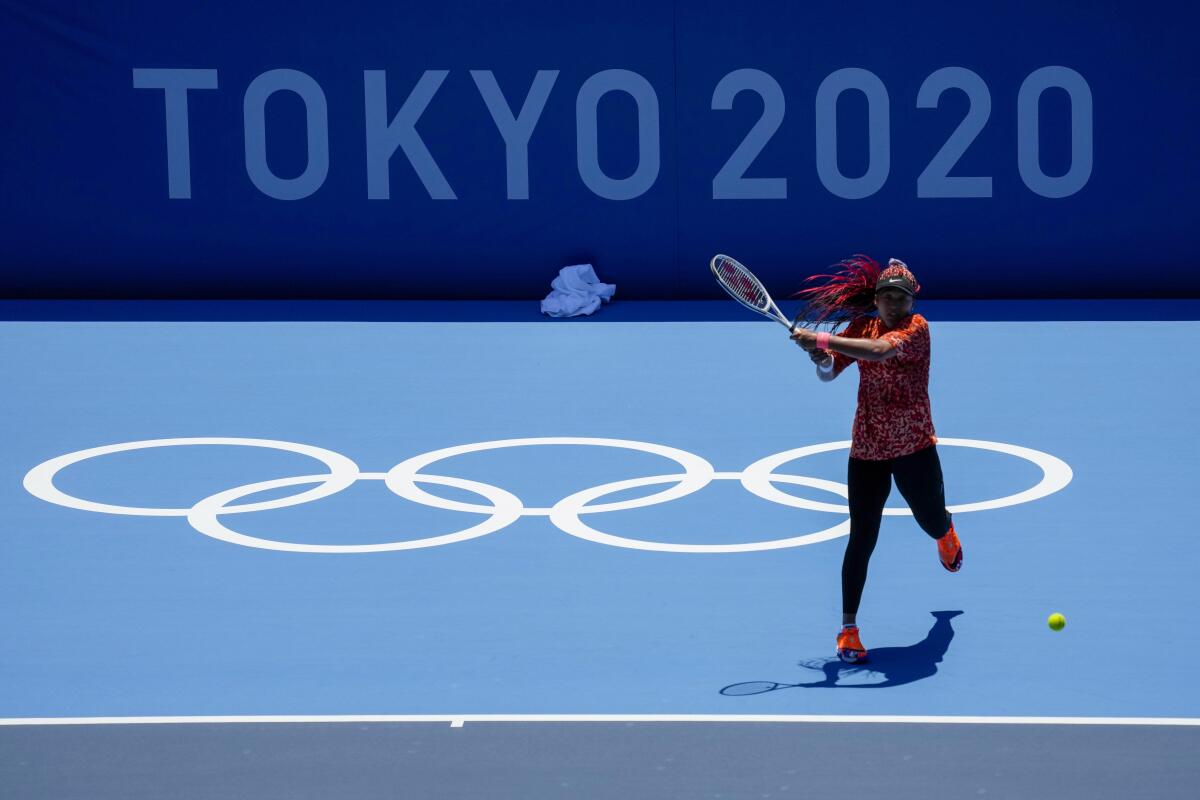
- Share via
Good morning from Tokyo. I’m your host, David Wharton.
Welcome to our new Tokyo Olympics newsletter, which will be delivered every morning to The Sports Report subscribers seven days a week until Aug. 9. Before we get to our top Olympic stories, let me introduce you to my view of Tokyo.
The Olympics do not begin here for another five days but have already garnered a couple of nicknames. Japanese organizers initially dubbed them the “Reconstruction Games,” paying tribute to their country’s recovery from past natural disasters. Since then, they have become popularly known as the “Pandemic Games” for globally obvious reasons.
After a few days inside the so-called “Olympic bubble,” I’ve got another moniker: “The Saliva Games.”
The daily coronavirus tests required of journalists involve spitting into a clear plastic tube, trying to fill the thing to an inscribed black line. It’s a lot harder than it might sound, especially the first time, when you get off a plane after 11 dehydrating hours.
Test officials shepherd you into a cubicle where you sit or stand facing a wall. They have taped up snapshots of citrus fruit, with the suggestion that you “imagine,” to help generate the necessary bodily fluids. It can take minutes on end.
None of this is meant to downplay the desperately serious business at hand. In a country where nearly 15,000 people have died from COVID-19, cases are on the rise and less than 20% of the populace is vaccinated, the government is scrambling to keep these Games from becoming a superspreader event. But two South African soccer players have already tested positive inside the athletes village. There have been other cases in and around the bubble, with an International Olympic Committee official and various staff among the 55 people found to have COVID-19. Cocoa Gauff tested positive for the coronavirus before she even in arrived in Japan and withdrew from the tennis competition.
Go beyond the scoreboard
Get the latest on L.A.'s teams in the daily Sports Report newsletter.
You may occasionally receive promotional content from the Los Angeles Times.
This news has not exactly eased concerns in a city where residents are living under a state of emergency and have urgently pushed back against inviting 11,000 athletes, along with thousands more officials, coaches and journalists, from around the world. My colleague Dylan Hernandez chronicled the widespread anxiety about the flood of international visitors arriving in Japan.
As the Games struggle toward a downsized opening ceremony on Friday evening, it will take a lot of spitting — and a lot more effort — to keep things from getting out of hand.
Despite the extensive challenges, athletes are excited as they arrive in Tokyo.
And now, let’s get to the latest Olympic news.
The Times released its 24-page Olympic preview section Sunday, your passport to the Games. The section was distributed exclusively to home delivery subscribers and e-newspaper readers. You can purchase a copy of the preview section in The Times store.
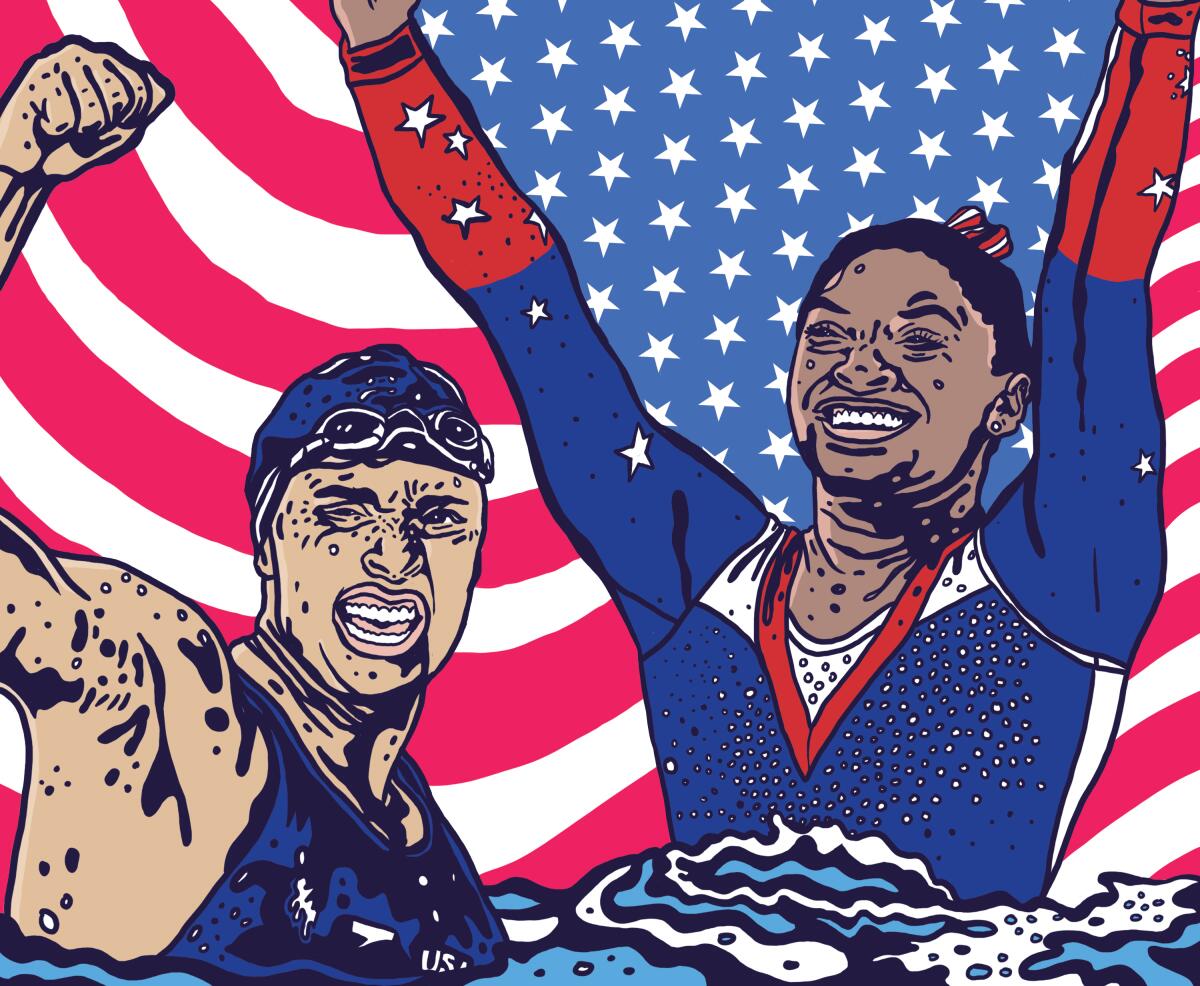
Swimming
Nathan Fenno on swimming superstar Katie Ledecky: The girl couldn’t make it across the pool.
Midway through the 25-meter journeys at the Palisades Swim and Tennis Club in Cabin John, Md., she’d grab a lane line and catch her breath like so many other 6-year-olds figuring out how to swim. Then the windmilling to the other side resumed.
She had a smile that seemed bigger than her diminutive frame, swim cap pulled over her ears and enthusiastic post-race analyses captured on home movies.
Eighteen years later, Katie Ledecky is the world’s most dominant freestyle swimmer. The biggest question when she knifes through the water usually isn’t whether she’s going to touch the wall first, but how many body lengths she’ll be in front of the second-place finisher.
“Katie Ledecky is doing what Katie Ledecky does!” the public address announcer shouted last month as she completed another convincing victory during the U.S. Olympic swimming trials in Omaha. “Do not let it pass over you.”
Michael Phelps, the 28-time Olympic medalist, called Ledecky “the greatest female swimmer of our time.”
Coaches, teammates and competitors point to her powerful stroke, legendary training sessions, unusual blend of speed and endurance, and tenacity that is otherworldly. The traits, at least individually, aren’t uncommon in elite swimmers. And they’re ultimately suggestions straining to answer a larger question.
Ledecky leaves some of the most experienced people in swimming grasping for the secret to her dominance. Genetics? An iron will? Nature versus nurture? God? What transformed that girl who couldn’t make it across the pool?
Gymnastics
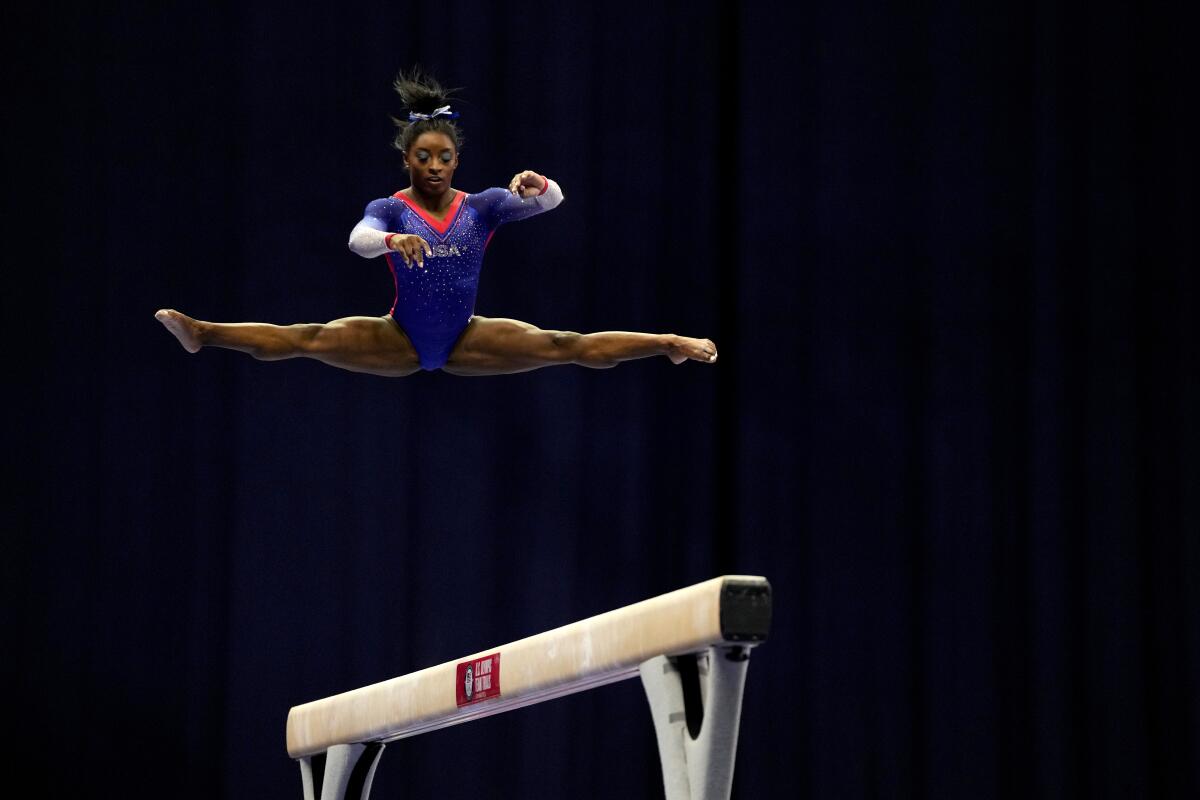
Helene Elliott on star Simone Biles: To watch Simone Biles soar so high off the vault table that she nearly kisses the sky, twisting and flipping an absurd number of times before gravity peevishly reclaims her, is to wonder if your eyes truly saw things your brain insists can’t possibly have happened.
What did she just do? How did she do that?
She is a five-time Olympic medalist and owner of more gold medals at the world championships (19) and total world medals (25) than any other gymnast, feats that would secure her legacy without question. But when the Tokyo Olympics were delayed a year, she challenged herself to pursue a second straight all-around title by conjuring and conquering moves that pushed her to heights no other female gymnast has touched.
In May, she became the first woman to land a Yurchenko double pike vault, which calls for a roundoff onto the springboard, a back handspring onto the vault, and two backflips with her body folded and her legs straight. Because of the pandemic, it was her first competition in 18 months. She aced it.
Easing back into things isn’t her style. Nor is settling for doing something well if she can do it spectacularly.
Biles, 24, thought she was done after she won four gold medals and a bronze at the 2016 Rio Olympics. After taking a year off she realized she still could make the impossible become real and elevate the sport.
“I think that when somebody’s striving for perfection and doing harder skills, it pushes other athletes to know that it’s possible and that they can do it, too,” she said after she won the all-around title at the U.S. Olympic trials and affirmed her berth on the Tokyo team.
“I would say we have reached a point where gymnastics is getting more difficult and more difficult and a little bit more dangerous so we’re kind of walking on eggshells here, but it’s exciting to watch.”
Surf and skateboarding
I wrote about SoCal’s influence on the Tokyo Olympics: A summer breeze flutters across the beach at Lower Trestles, cool to the skin, carrying the promise of rain from low, gray clouds that gather overhead, but the waves are pumping and Kolohe Andino is getting fidgety, eager to pull on a wetsuit and paddle out.
With a blue flannel shirt hanging loosely from his slender frame and a ball cap tugged down over disheveled, blond hair, Andino looks every bit the way he describes himself.
“I’m just a scruffy surf nerd,” he says.
It wasn’t so long ago that the San Clemente native was hanging around his place, watching television, when a commercial with gymnast Simone Biles came on and an odd notion crossed his mind: Wow, I’m kind of like her.
At first glance, no one would mistake the pro surfer for Biles, who is compact, powerfully muscular and a Black woman. But this summer Andino will be kind of like Biles because his sport is making its Olympic debut and, as a familiar name on the world tour, he will join the iconic gymnast on a U.S. squad headed for Tokyo.
Andino won’t be the only oddity on the American roster.
Just a half-hour north on the San Diego Freeway lives Nyjah Huston, a pro skateboarder with earrings in both ears and tattoos from his chin to his feet. Huston still gets chased away by police when he and his friends experiment with new tricks at the park or in front of a public building — it is hard to imagine Michael Phelps or Usain Bolt getting rousted by the cops during practice.
In all, the inaugural U.S. surf and skateboard teams will include seven Californians, none of whom quite fit the traditional Olympic mold. They have been incorporated into the program for a reason.
Enjoying this newsletter? Consider subscribing to the Los Angeles Times
Your support helps us deliver the news that matters most. Become a subscriber.
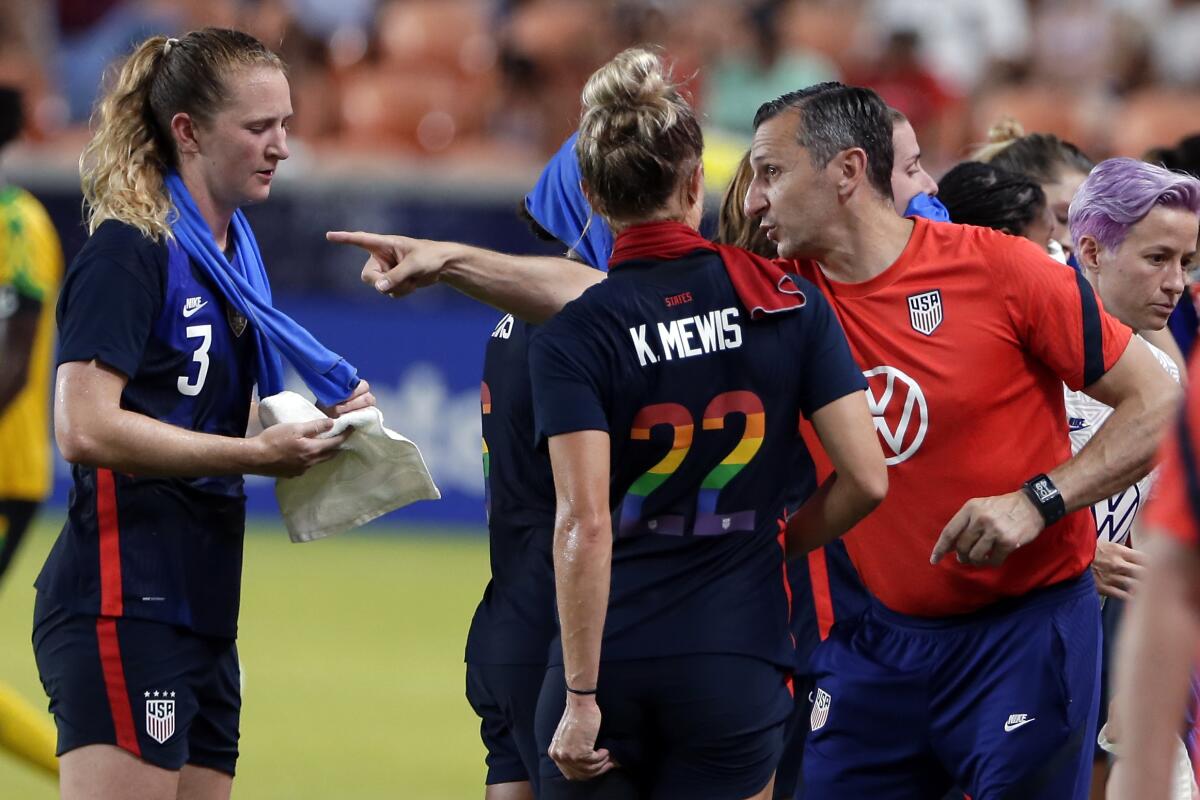
Soccer
Kevin Baxter on the U.S. women’s national team: Vlatko Andonovski likens the gift he’s been given to a precious jewel. Because like a gem, the U.S. women’s national soccer team Andonovski coaches was forged in heat and pressure and had to wait years for its brilliance to be recognized.
“When it’s successful, then people will notice it more,” he said. “This group of women are incredible soccer players. They’re always going to be a group that represents a diamond.”
And though diamonds don’t fade, they can lose their sparkle if not cared for properly, which is where Andonovski comes in. The team he inherited from Jill Ellis following the 2019 Women’s World Cup triumph was already the best in history.
The one Andonovski will take into the Tokyo Olympics this week is arguably better.
“People don’t see or understand how much these players want to grow,” said Andonovski, whose 22-player roster includes 17 from the unbeaten World Cup team. “Their hunger for getting better and improving and being the best version of themselves is actually bigger than the players that are not on the national team.
“That’s what excites me as a coach regardless of where I’m at.”
Getting where Andonovski is at required a dizzying, improbable journey.

Speed climbing
I introduced readers to a new Olympic sport: For those who have not yet seen the sport of speed climbing, the concept is fairly simple.
Imagine Spider-Man scrambling, blurry fast, up the side of a four-story building. Now picture another Spider-Man racing him, side-by-side, to the top.
The fact that mere humans — minus the radioactive spider bite — can scale a standard 50-foot competition wall, scurrying from one small climbing hold to the next, and tap the buzzer in about six seconds makes this new Olympic event all the more startling. Even for the athletes.
“In the moment, it feels slow,” says Colin Duffy, a member of the U.S. squad headed for Tokyo. “But afterward you don’t even remember what happened, it went by so fast.”

Olympic TV
Iliana Limón Romero shares how to watch the Tokyo Olympics, including broadcast, cable and streaming options.
The Tokyo Olympics will be broadcast and streamed in the U.S. on NBC Universal platforms, which will feature more than 7,000 hours of coverage.
In addition to NBC, the Games will be featured on CNBC, Golf Channel, NBC Olympics, NBC Sports Network, Telemundo and USA.
Olympic shows and live events also will be streamed on Peacock, NBCOlympics.com and NBCSports.com.
NBC’s streaming service Peacock has started some of its Olympic channels and will carry livestreams of most sports, including popular gymnastics and track and field. All of Peacock shows and event coverage will be available free of charge except for men’s basketball.
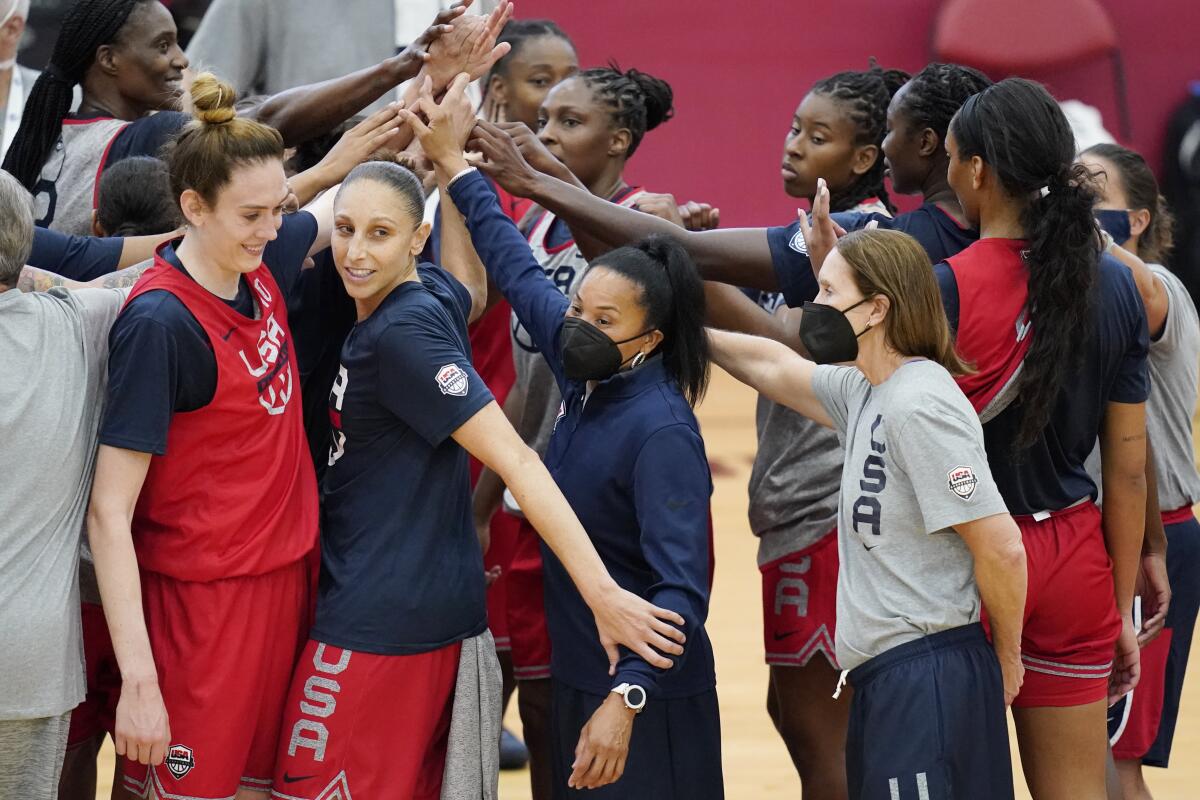
Olympic athlete tracker
Austin Knoblauch developed The Times’ Olympic athlete tracker: After a yearlong delay because of the COVID-19 pandemic, the Tokyo Olympics are set to officially begin Friday. A total of 612 athletes, including 55 gold medalists, will represent the United States at the Olympics, with dozens hailing from cities and towns in the Greater Los Angeles and San Diego areas.
Read about the athletes and check back often to get the latest updates on any medals they have won during the Games.
Photo of the day
After withdrawing from Wimbledon and sharing she has battled depression, tennis star Naomi Osaka is in Japan training ahead of the Tokyo Olympics.
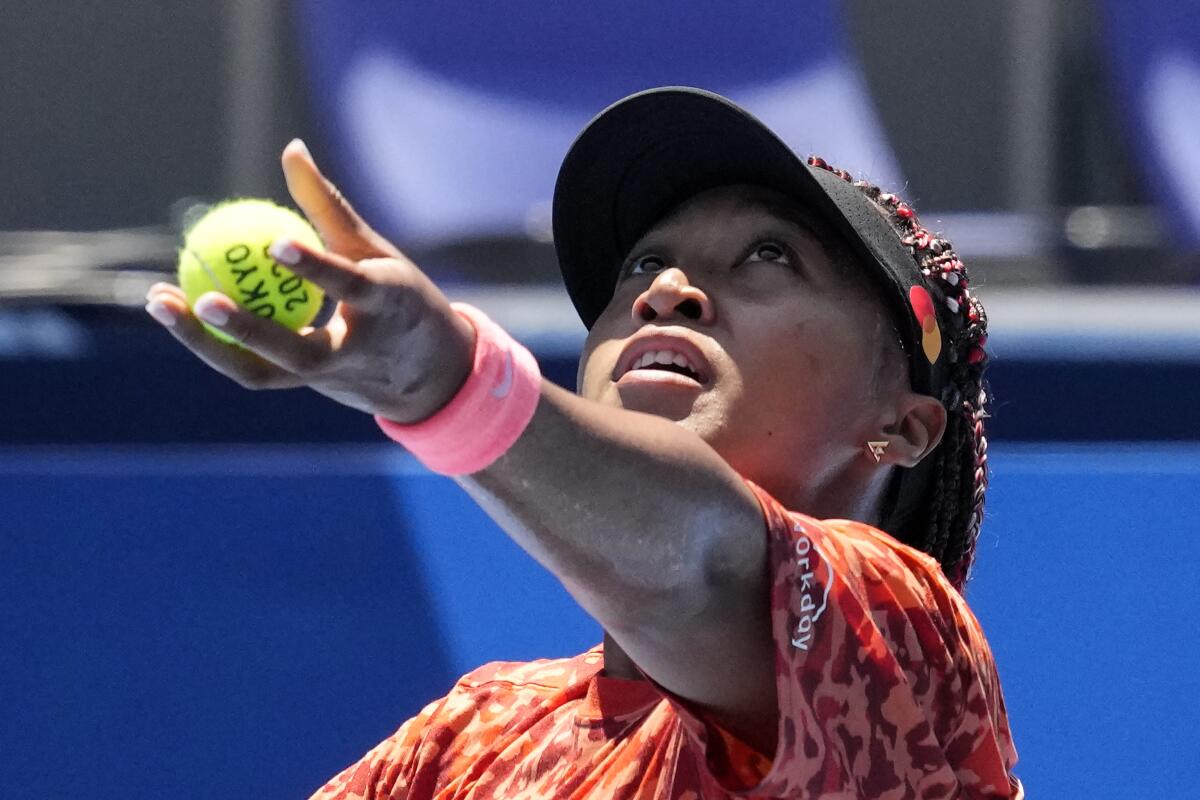
And finally
NBC’s Tokyo Olympics Twitter account shares a deep dive on the perfect swimming turn that can mean the difference between gold and no medal at all. Go under the water with swimmers Caeleb Dressel, Katie Ledecky, Kathleen Baker and Michael Andrew.
Until next time...
That concludes today’s newsletter. If you have any feedback, ideas for improvement or things you’d like to see, email me at houston.mitchell@latimes.com, and follow me on Twitter at @latimeshouston. To get this newsletter in your inbox, click here.
Go beyond the scoreboard
Get the latest on L.A.'s teams in the daily Sports Report newsletter.
You may occasionally receive promotional content from the Los Angeles Times.




